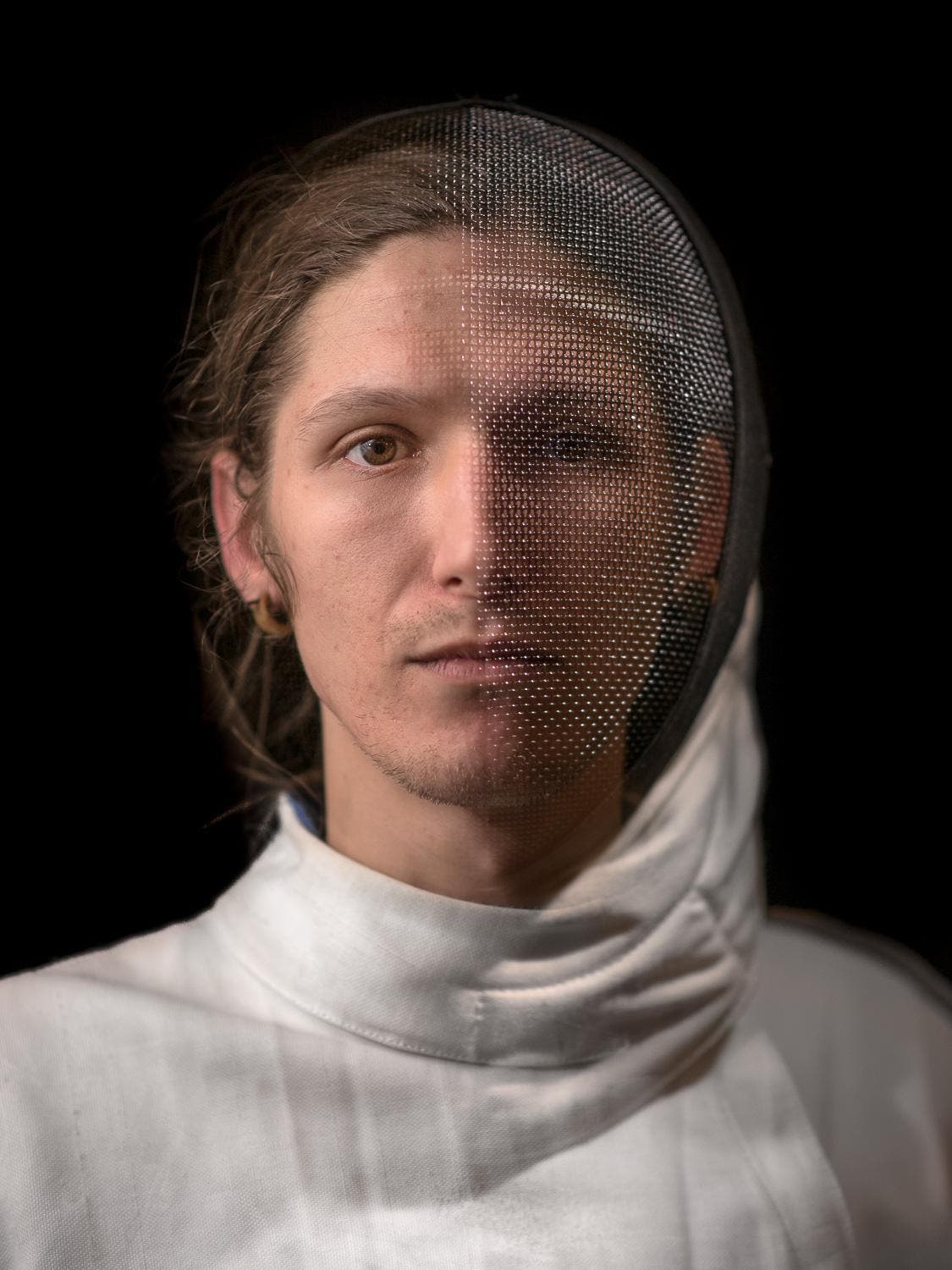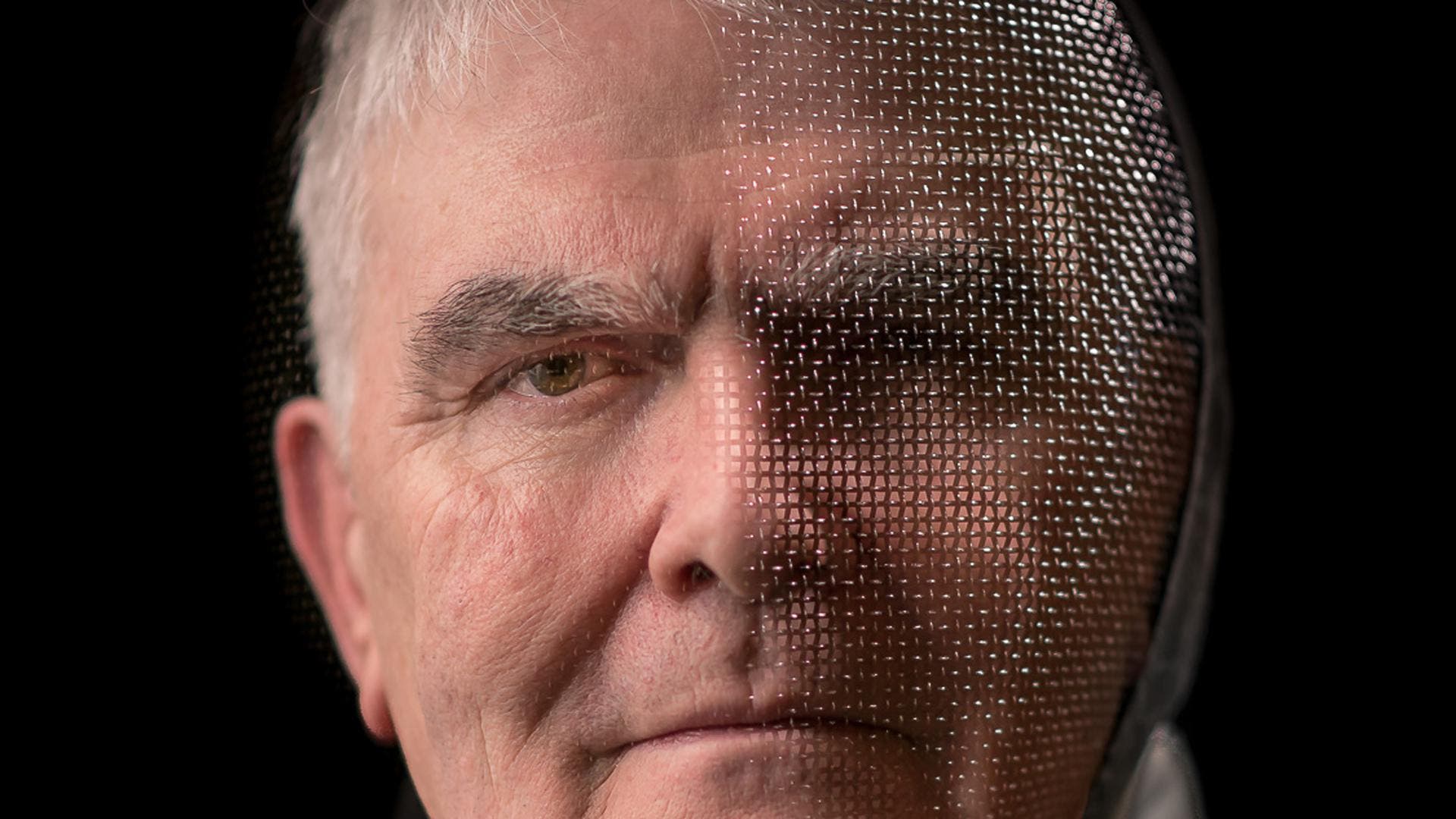Every type of portrait photography needs some level of creative approach so it won’t result in just another snapshot. Sometimes, however, it needs a tad more to tell the full story. This couldn’t have been truer than when I went to photograph members of a classical fencing club. It was obvious to me that I had to photograph them without their fencing masks, but at the same time they were such a great looking prop – that’s how I came to the idea of using double exposure for their portraits.


My first thought was to blend photographs in Photoshop for maximum control, but since I am a better photographer than digital artist, all double exposure was made in camera. I later tweaked photographs in Lightroom a bit, as in camera double exposure made them darker and washed out.
The technical setup was actually simpler than it might seem. It was a lot of switching between two different light setups to have a strong difference between how the face and mask were lit on exposures that followed each other. Thanks to confined space, I used IR on my D610 to trigger three separate SB910s. The face without the mask was lit by two strobes that I kept on Channel A, both positioned in a way where they lit only half of the face, slightly spilling to the other half to keep the eye visible. I initially thought about snoot/grid type of modifiers and tried to use a reflector to fill shadows, but after a bit of gymnastics, I used two umbrellas, large Joe McNally 4-in-1 Umbrella and one smaller Lastolite just below it. You can see the corner of it on the left side of this photograph where the fencing master explained to me how useful it was to crack a skull with a metal ball on the end of a rapiers handle before laying down the final blow. Whoops…

Even though we worked in quite a spacious hall, I could only use a small corner so I wouldn’t become the receiver of any pointy ends while they dueled. I had to photograph quite close to the back wall and had a bit of light spill on it. To remedy this, I placed black felt behind sitters to swallow any unwanted photons. I could probably use that dividing line you can see behind my assistant as an effect for the background, but I knew that I would tweak lights a bit for everyone and since I wanted to have the same look for each sitter and didn’t have too much time, I preferred to cut it out altogether.



Light for the fencing masks was a bit trickier. Everyone used a slightly different finish and shape, so after playing a bit with a grid at the beginning, I ended up using two flags to shape a slice of light that could be accommodated for each fencer and kept this on Channel B.
One important thing I had to keep in mind all the time was at least one eye of each sitter is in exactly same position between photographs of the face and the mask so they would align nicely for the double exposure. Everyone was also of different height so light stands and tripod traveled up and down with everyone as they sat down for their portrait.
Once I had all of this in place it was “just” a matter of switching between Channel A and B for each exposure to make final photographs.


It went so smoothly that I had few minutes at the end to make full body portrait of each fencer with their favourite weapon. This time with no almost posing at all, I just quickly picked my frame, asked for weapons to fill the stand and shifted practice mannequin to the right in of the frame. I also made sure that mask they holding is facing camera. These photos were made only with available light so I turned off some of the hall lights, blocked others with large umbrella to have a bit more contrast and slowed down shutter to 1/15s. BTW, the only lens I used for the whole evening was wide open Nikon 85mm f1.8




All photographs in this article by:
Marcin Lewandowski / soundofphotography.com ©
You can follow Marcin on instagram.com/soundofphotography
Or on facebook.com/marcinlewandowskiphotography






